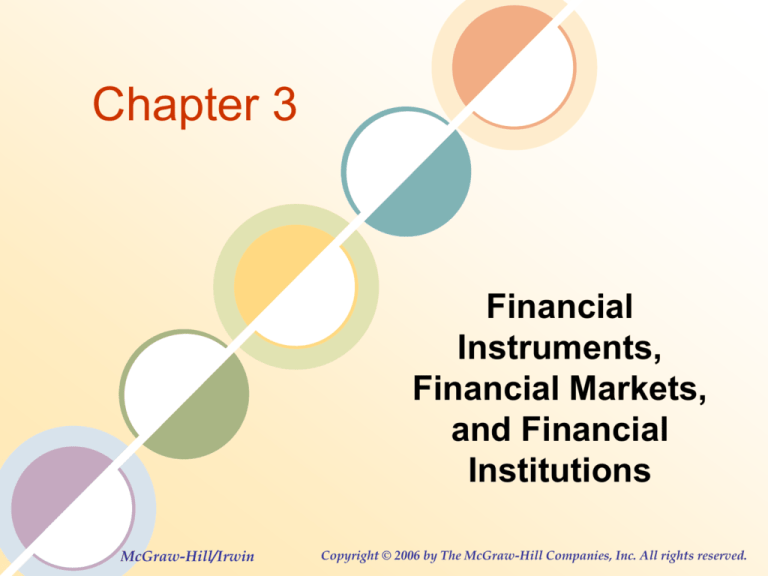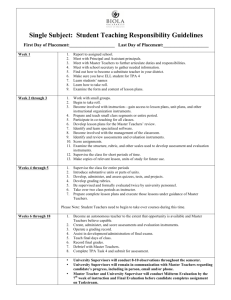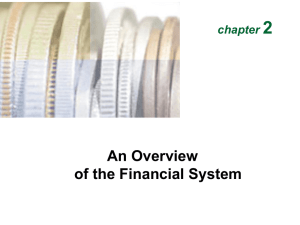
Chapter 3
Financial
Instruments,
Financial Markets,
and Financial
Institutions
McGraw-Hill/Irwin
Copyright © 2006 by The McGraw-Hill Companies, Inc. All rights reserved.
Financial Intermediaries
Indirect Finance
• An Institution stands between lender and
borrower.
Direct Finance
• Borrowers and lenders deal directly with each
other.
3-2
Financial and Economic
Development
3-3
Financial Instruments
• A financial instrument is the written
legal obligation of one party to
transfer something of value –
usually money – to another party at
some future date, under certain
conditions, such as stocks, loans,
or insurance.
3-4
Financial Instruments
Serve as a:
Means of payment (Like Money)
Store of Value (Like Money)
allow for the trading of risk
3-5
Financial Instruments
Characteristics
•
•
Standardization
Communicate Information
Classes of Financial Instruments
•
•
Primary – underlying Instruments
Derivative Instruments
• Value derived from the behavior of Underlying instruments.
3-6
Value of Financial
Instruments
1.
2.
3.
4.
Size the promised payment.
When the payment will be received.
The likelihood the payment will be
made (risk).
The conditions under which the
payment will be made.
3-7
Examples of Financial
Instruments
Primarily Stores of Value
•
•
•
•
•
Bank Loans
Bonds
Home Mortgages
Stocks
Asset-backed securities
3-8
Examples of Financial
Instruments
Primarily to transfer risk
• Insurance
• Futures Contracts
• Options
3-9
Financial Markets
Financial Markets are the places where
financial instruments are bought and sold.
3-10
Financial Markets
Role of Financial Markets.
• Offer liquidity to borrowers and savers.
• Pool and communicate Information.
• Allow risk sharing
3-11
Financial Markets
Structure of Financial Markets
• Primary vs. Secondary Markets
• Centralized Exchanges vs. Over-thecounter Markets.
• Debt and Equity vs. Derivative Markets
3-12
Financial Markets
Characteristics of a well-run financial market
• Low transaction costs.
• Information communicated must be
accurate.
• Investors must be protected.
3-13
Market Size and Investor
Protection
3-14
Financial Institutions
Role of Financial Institutions
• Reduce transactions cost by specializing in
the issuance of standardized securities
• Reduce information costs of screening and
monitoring borrowers.
• Issue short term liabilities and purchase longterm loans.
3-15
Financial Institutions
3-16
Financial Institutions
3-17
Financial Institutions
The structure of the financial industry
•
•
•
•
•
•
Depository Institutions
Insurance Companies
Pension Funds
Security Firms
Finance Companies
Government Sponsored Enterprises
3-18
Chapter 3
End of Chapter
McGraw-Hill/Irwin
Copyright © 2006 by The McGraw-Hill Companies, Inc. All rights reserved.











